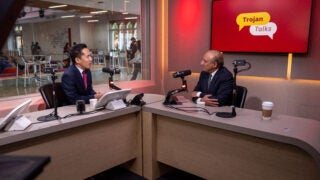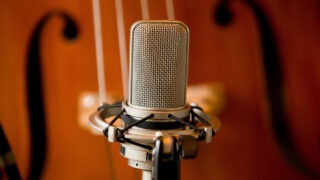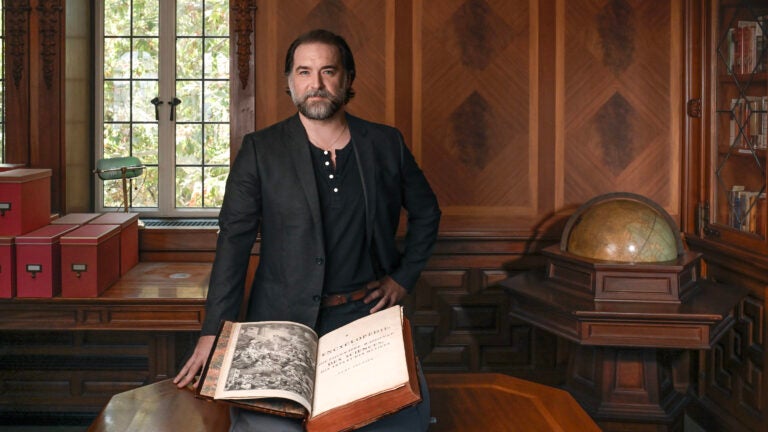
Librarians such as rare books librarian Derek Christian Quezada Meneses serve as knowledgeable field guides pointing the way to a bounty of literary, digital and tactile treasures at USC. (USC Photo/Gus Ruelas)
Treasures you’ve got to check out at USC Libraries
We asked a group of USC librarians to share favorite items from their respective library’s collections. You might be surprised by what they pulled off the shelves.
USC’s dynamic system of 19 libraries — 16 of them with physical locations across the University Park and Health Sciences campuses — is home to a staggering array of materials. The USC Libraries collectively hold 6 million volumes; 2.4 million e-books; 85,000 linear feet of archival collections; and 400,000 streaming films, videos and sound recordings. The collections include such disparate items as rare World War II artifacts, Hollywood film memorabilia and translations of Alice’s Adventures in Wonderland by Lewis Carroll in 100 languages.
USC librarians and staff members serve as knowledgeable field guides pointing the way to a bounty of literary, digital and tactile treasures. Here are some of their favorite gems.
Architecture and Fine Arts Library
Shannon Marie Robinson, head librarian: Los Angeles River Terrazzo
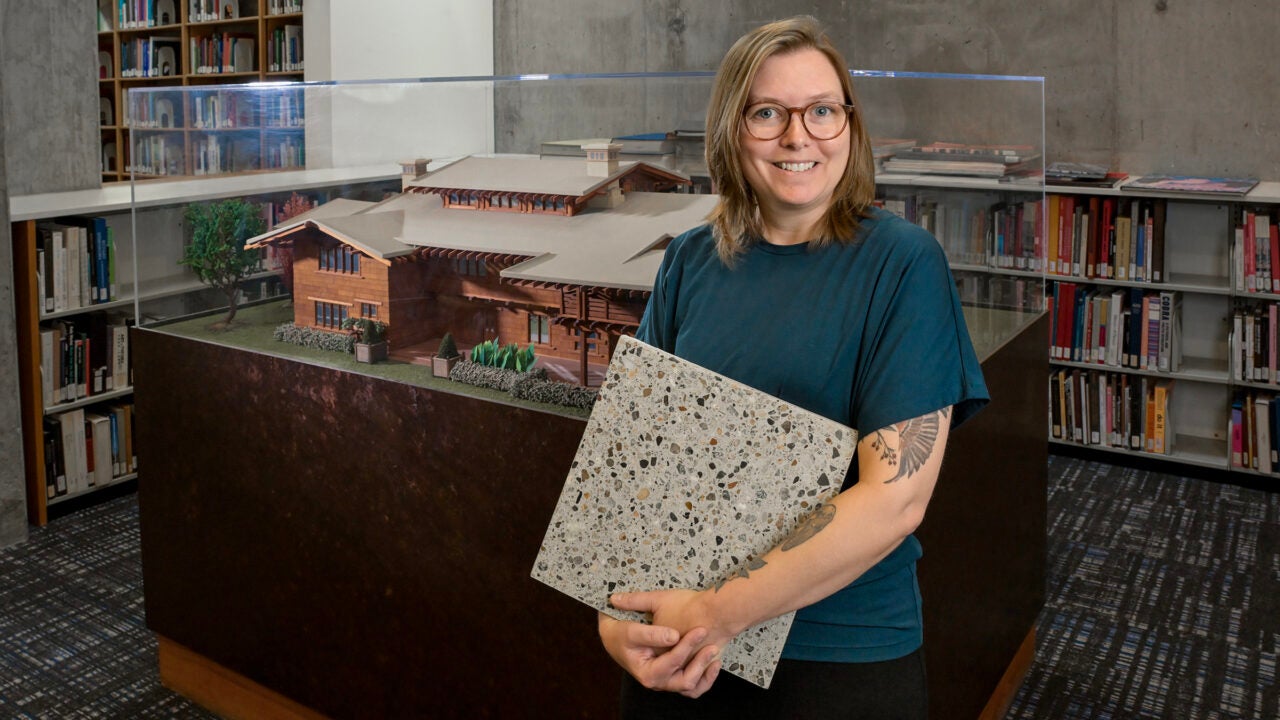
“The material — part of the Architecture and Fine Arts Library’s sustainable materials collection — is Los Angeles River Terrazzo, created by local resident Michael Tessler of Responsive Homes. The terrazzo is a mixture of aggregate and debris scooped directly from the river, which Tessler then uses to create products such as countertops and tiles that engage with the material ecology of our city. The terrazzo is an excellent example that materiality isn’t just about physical properties or aesthetics. Rather, materials tell stories, and those stories deeply connect us to objects and the built environment.”
Cinematic Arts Library
Billy Smith, library assistant manager: Sword from Braveheart (1995), directed by Mel Gibson
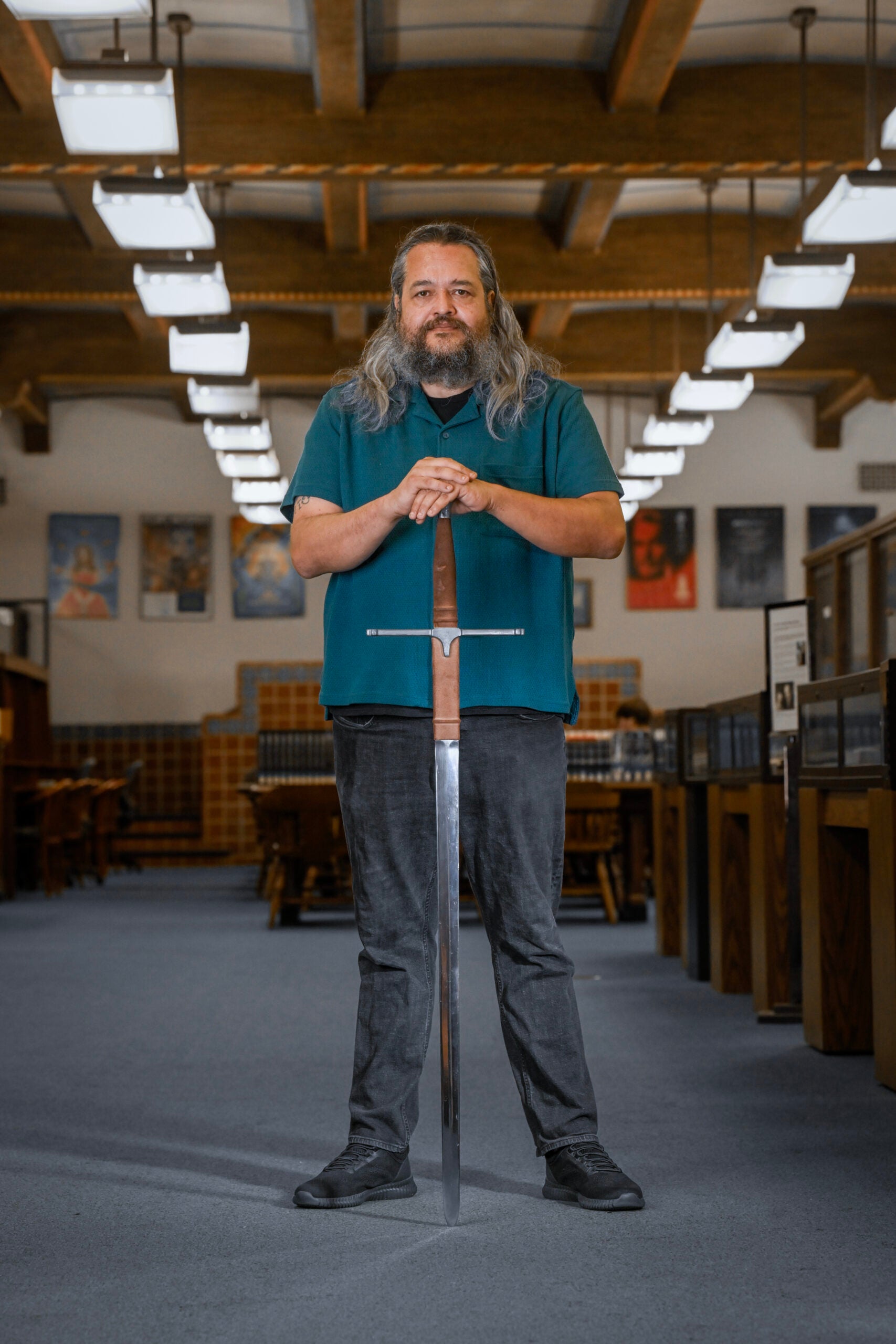
“This sword from the film Braveheart is a popular photo op among students and tourists alike. It is probably the most recognizable item in our collections, but it’s just a small representation of the vast number of artifacts housed in the archives of the USC Cinematic Arts Library. While our primary mission is to support the curricular needs of our students and faculty in the School of Cinematic Arts, our location in Southern California means we have been able to collect a tremendous amount of items documenting the history of the film industry, including set photographs, scrapbooks, annotated scripts, production records, musical scores, props, sketches and other primary source materials of value to researchers.”
Digital Repository
Katie Ehrbar, video archivist and post-production specialist: Film canisters of Black on Black (1968), directed by Joe Saltzman, professor at the USC Annenberg School for Communication and Journalism
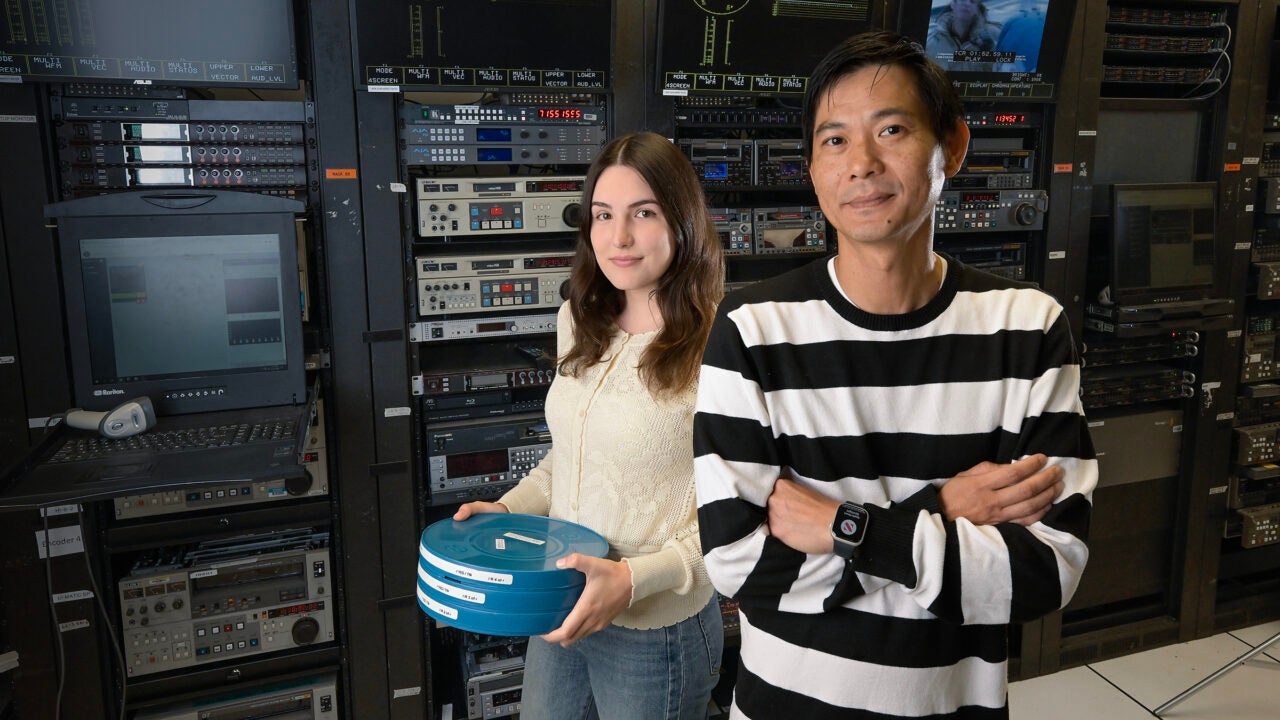
“I decided to hold the film canisters of a documentary project from the late ’60s we are about to start restoring at the Digital Repository. One of the coolest parts about working here is that we get to bring potentially lost or forgotten media back to life through our state-of-the-art technology and give it a new audience. A few reels of film might not look that exciting on their own, without showing how they look in motion, but the mystery of what we might uncover on these reels is part of what makes it interesting. We work with all kinds of media — videotape, audio cassettes, film, even vinyl records — and we’re always discovering new things within these formats. I chose film because it’s what I’m the most passionate about, and I feel really lucky to play a role in restoring something that deserves to be seen.”
East Asian Library
Jungeun Hong, Korean Heritage Library liaison: Film reels of “Ewha Womans University jubilee celebrations” (1936) by Victor Wellington Peters
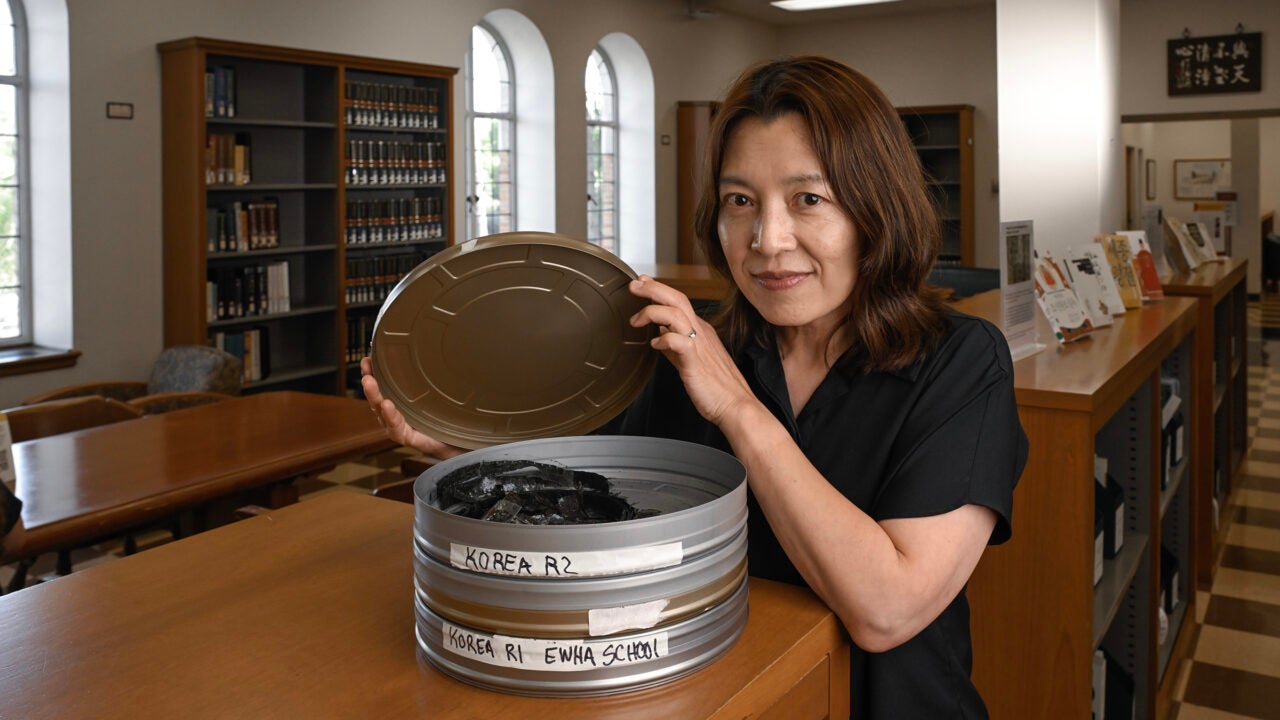
“I have always been curious about how someone in their 20s could be selfless enough to cross the ocean to an unknown land with different cultures, ethnicities and faiths, devoting themselves to helping others in need. The Reverend Victor Wellington Peters Collection is special to me in this regard. After graduating from USC, Peters went to Korea as a missionary in 1928 and even married a Korean woman to assimilate to Korean culture. This collection highlights the historical significance of American missionaries’ deep involvement in Korean history. Beginning in the late 1800s, these missionaries helped build educational institutes and hospitals and served as diplomats between the United States and Korea, despite the more critical views of their involvement today.
“These two reels of film capture a significant moment: the 50th anniversary of what’s known today as Ewha Womans University in Korea, which Peters’ wife attended. It gives a rare glimpse into life during that time, as well as an event celebrated under the Japanese occupation.
“Peters was an alumnus of USC and, at the age of 108, visited the USC Korean Heritage Library as the oldest living alumnus. Dino Everett from the HMH Moving Image Archive at the USC School of Cinematic Arts was able to painstakingly restore the brittle pieces of the film to bring us an otherwise lost part of history. What a remarkable circle of connectivity and archival serendipity.”
Hoose Library of Philosophy
Melissa Miller, head librarian: Dr. Flewelling & The Hoose Library: Life and Letters of a Man and an Institution by Wallace Nethery
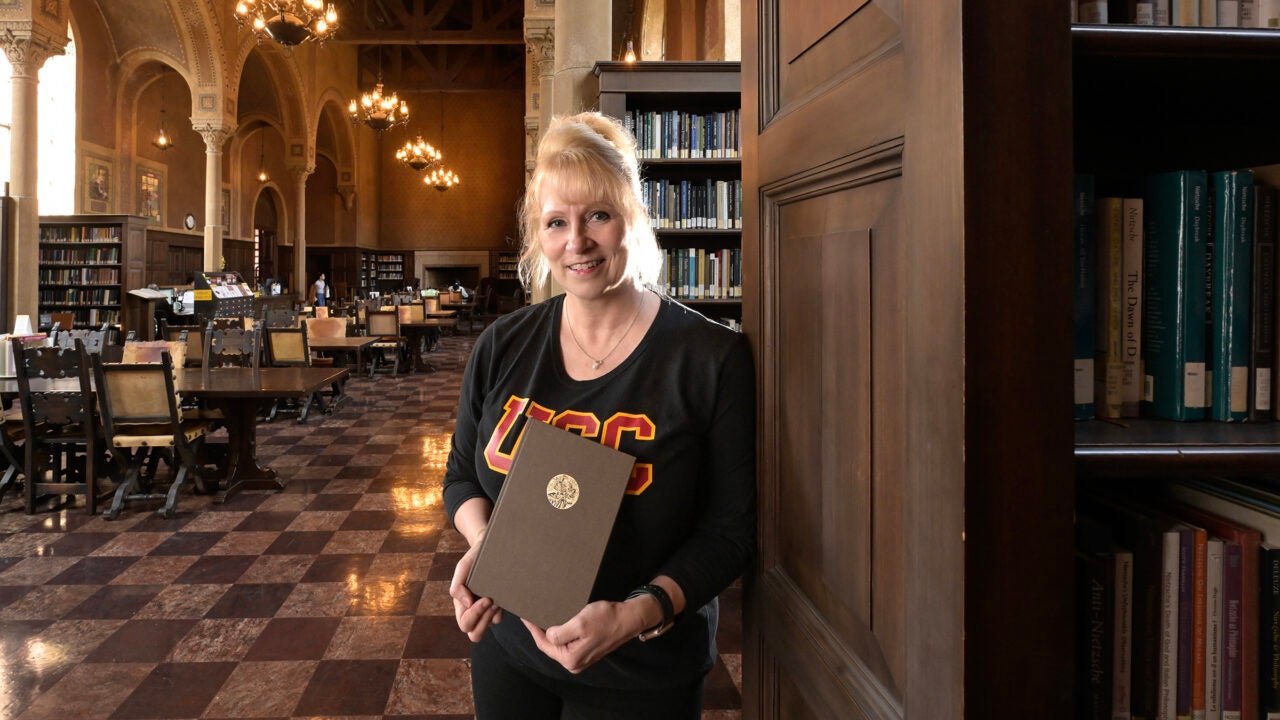
“The book portrays Ralph Tyler Flewelling [who was the first director of the School of Philosophy at USC] as a deeply compassionate figure. His efforts to aid scholars like Theodor Gomperz, his son Heinrich and his wife Ada, who faced Nazi persecution, extended beyond academic duties to active, life-saving intervention.
“Flewelling’s role in building the Hoose Library illustrates how intellectual leadership can elevate educational institutions to international prominence. His humanitarian actions reveal how deeply he lived his ethical principles. Examining his legacy allows scholars to explore how academic vision, empathy and moral responsibility can drive transformative contributions to cultural and educational heritage.”
Christina Snider, library and student assistant supervisor: Everything All at Once: How to Unleash Your Inner Nerd, Tap Into Radical Curiosity, and Solve Any Problem by Bill Nye
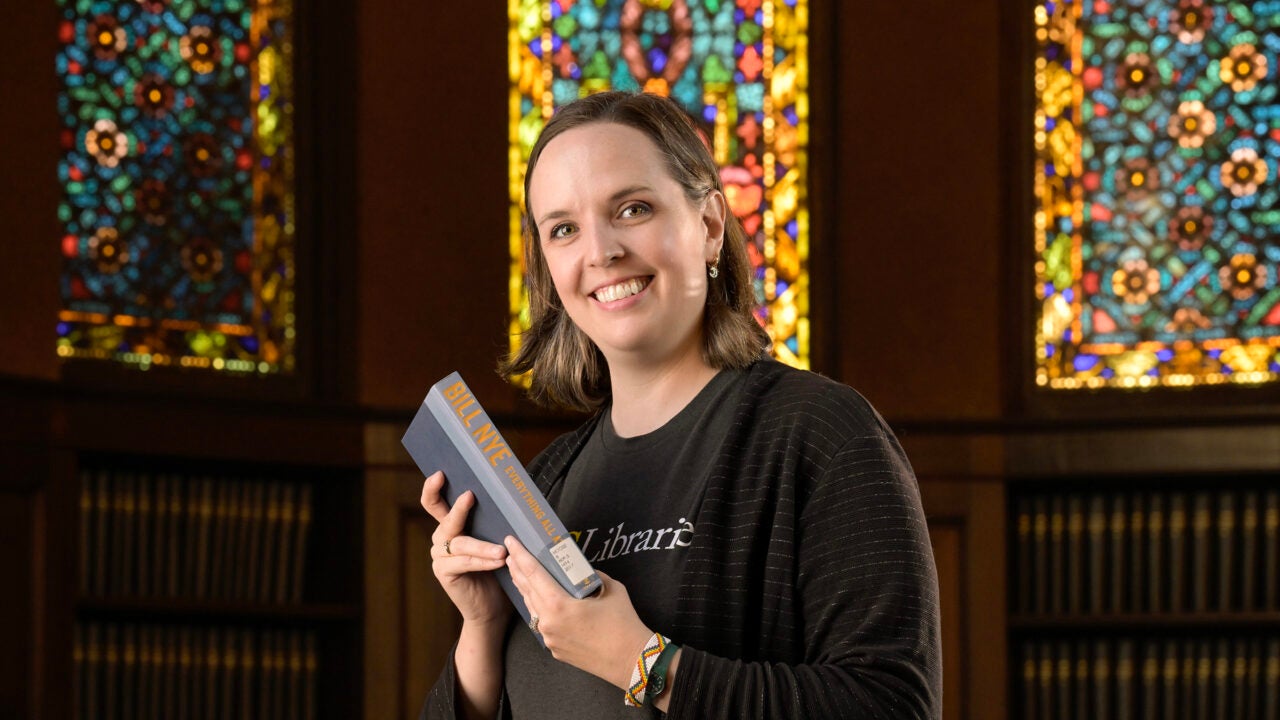
“Bill Nye has always been a personal hero of mine, making ‘smart people stuff’ like science and engineering accessible and approachable to young people across the country through his eponymous PBS television show, Bill Nye the Science Guy. His book Everything All at Once brings a philosophical and scientific approach to solving even the most complex problems and questions.
“He examines the overlap between philosophy and science: both fields are in pursuit of the truth. Philosophy at its core is applicable to any discipline or field of study, since we all have problems to solve and questions to answer. The word ‘philosophy’ translates to ‘love of wisdom’ or ‘love of knowledge.’ To me, this book and this library serve as reminders that knowledge and the truth — and the pursuit of both — are for everyone.”
Library for International and Public Affairs
Jynna Hughes, library assistant manager: Brave Wolf and the Thunderbird by Joseph Medicine Crow
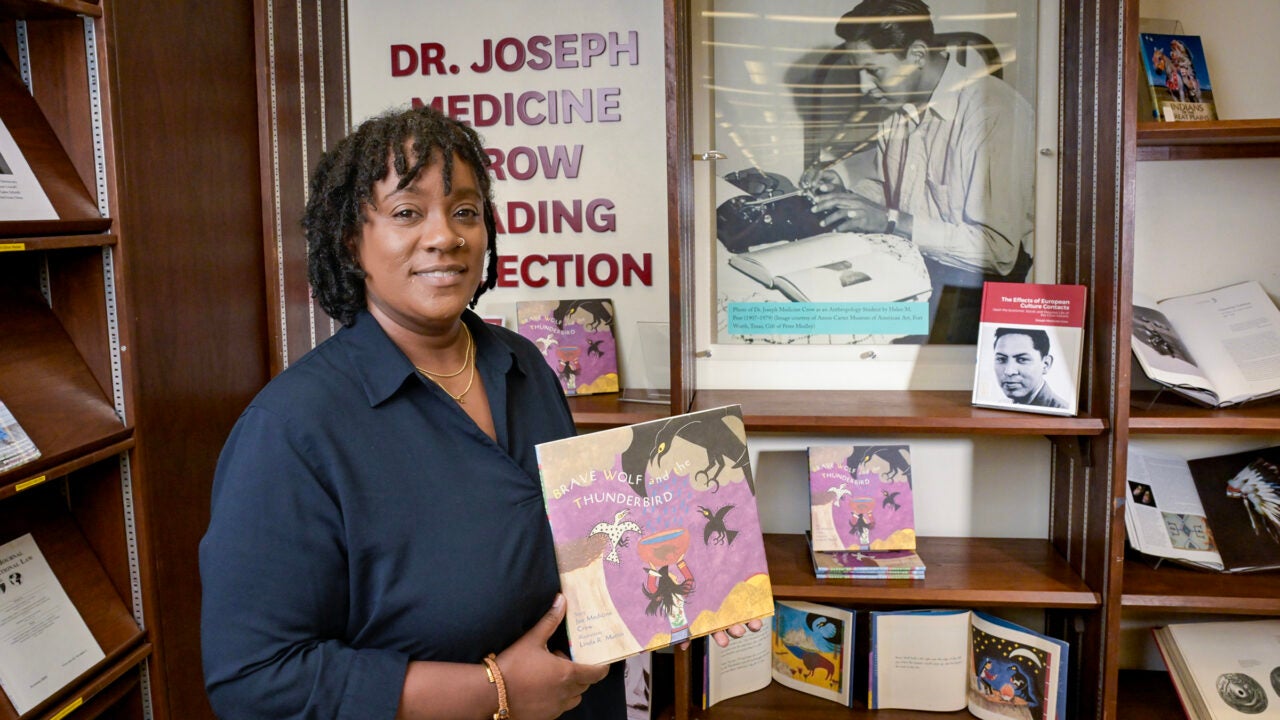
“Brave Wolf and the Thunderbird by Joseph Medicine Crow is part of the Library for International and Public Affairs (LIPA) Dr. Joseph Medicine Crow Collection, where we house a strong collection of genocide studies materials that cover a history of human rights violations and war crimes. It is important to highlight and promote stories from Indigenous voices, a group whose stories and contributions are often suppressed and degraded.
“Brave Wolf and the Thunderbird is one of the few children’s books at LIPA. It was important for me to choose a children’s book because curiosity, empathy and a love of learning build between the pages of a book. I also began my library career shelving children’s books at a public library.”
ONE Archives
Alexis Bard Johnson, curator: Sci-fi, Magick, Queer L.A.: Sexual Science and the Imagi-Nation edited by Kelly Filreis and Alexis Bard Johnson
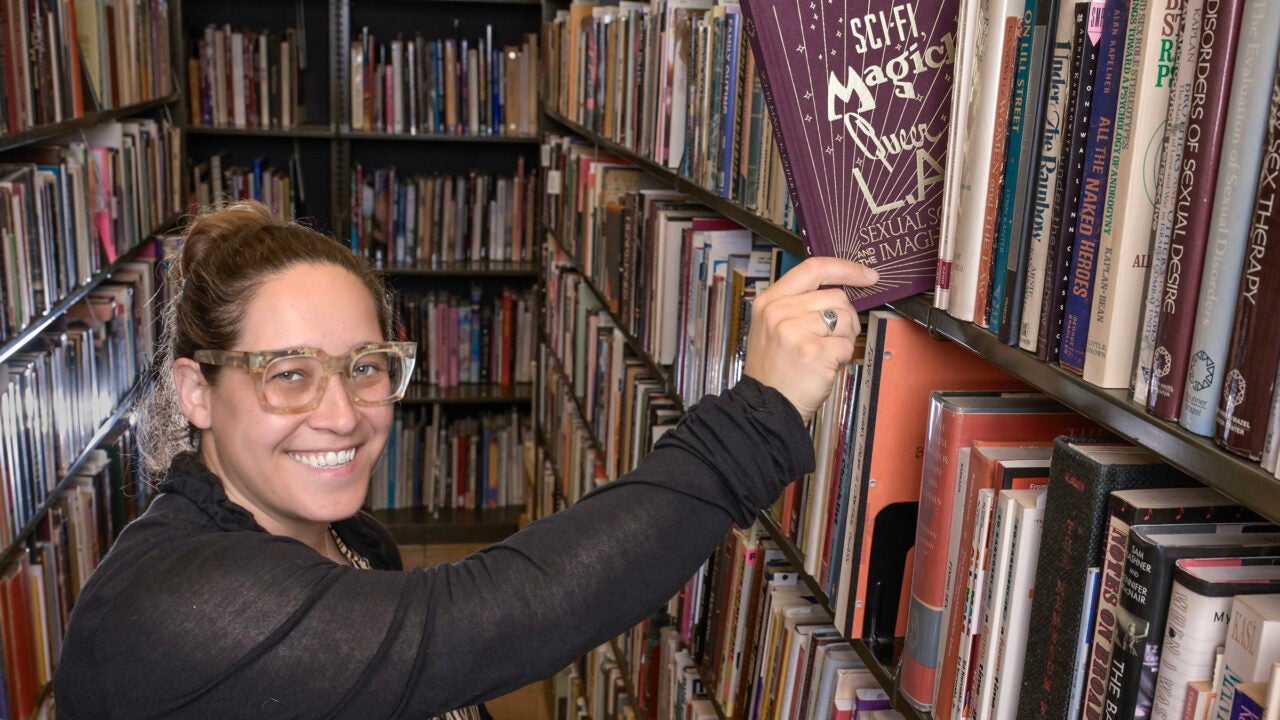
“I started as the curator at ONE Archives in fall 2019 and have been working on this book since then. Sci-fi, Magick, Queer L.A.: Sexual Science and the Imagi-Nation is the companion publication to the exhibition by the same name that is part of the PST ART: Art & Science Collide initiative presented by the Getty. The exhibition, on view at the USC Fisher Museum of Art, closes Nov. 23 but will reopen after a winter break and run from Jan. 14-Mar. 15, 2025, with just a few curatorial changes. The book explores the overlooked importance of science fiction fandom and the occult to U.S. queer history.
“Science fiction and occult communities helped pave the way for the LGBTQ-plus movement by providing a place for individuals to meet, imagine and create a life less restricted by societal norms. Focusing on Los Angeles from the late 1930s through the 1950s, this book follows the lives of artists, writers, publishers, early sci-fi enthusiasts and progressive communities, from Kenneth Anger, Lisa Ben and Jack Parsons to the Los Angeles Science Fantasy Society (LASFS) and Ordo Templi Orientis at the Agape Lodge (OTO).
“Spanning sci-fi fandom, queer history and the occult, Sci-fi, Magick, Queer L.A. reveals how visionary artists, filmmakers, scientists and science fiction writers and fans worked together to build a world of their own making. The exhibition is on view for a limited time at the USC Fisher Museum, but the book will last in our collection and others forever.”
Special Collections
Derek Christian Quezada Meneses, rare books librarian: Encyclopédie by Denis Diderot
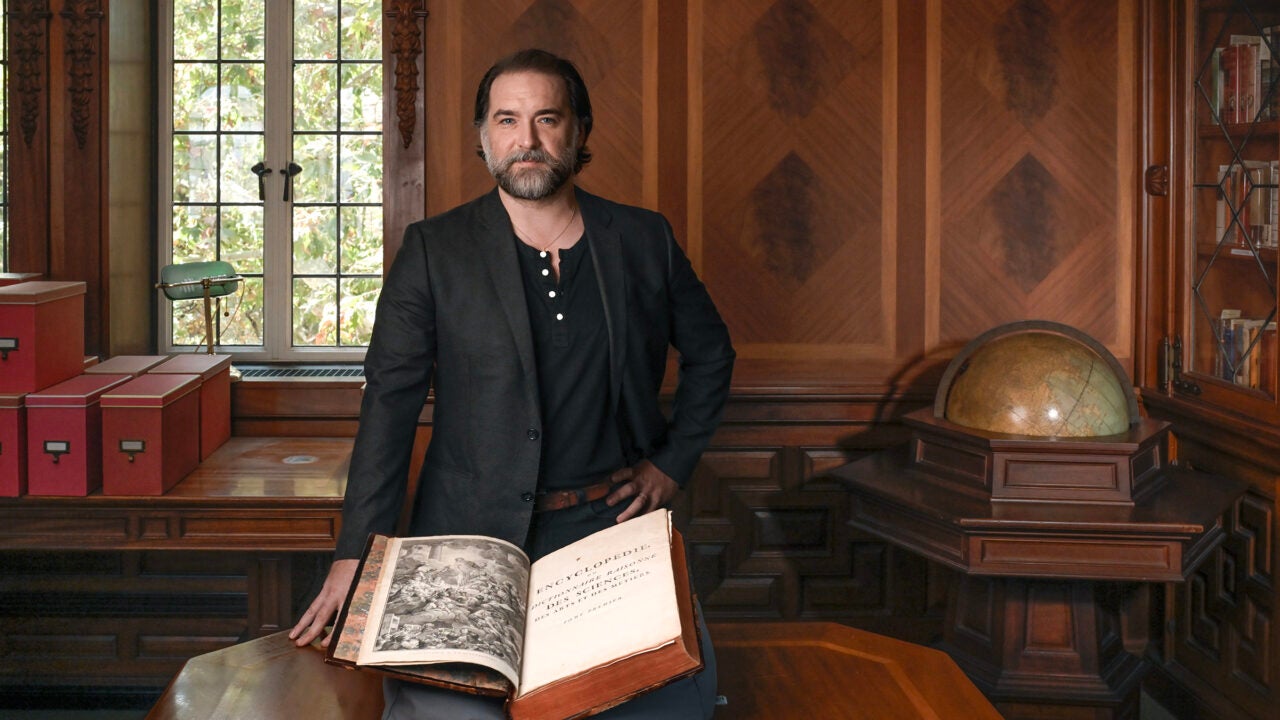
“The Encyclopédie is one of those essential books I use again and again in my classes. While it’s technically an encyclopedia, what Diderot and his collaborators created was an exhaustive attempt to document human knowledge and capability of the time — a sort of lifeboat of civilization.
“I keep coming back to it because it connects to so many key Enlightenment figures like Voltaire and Rousseau and invites students to see how complex ideas and innovations were organized and diffused through the printing press. It’s highly visual, created clandestinely at various points and really quite radical in ways I think still resonate with people today.”
Taylor Dwyer, curator, Feuchtwanger Memorial Library: Charred fragment of a page of Jud Süß by Lion Feuchtwanger
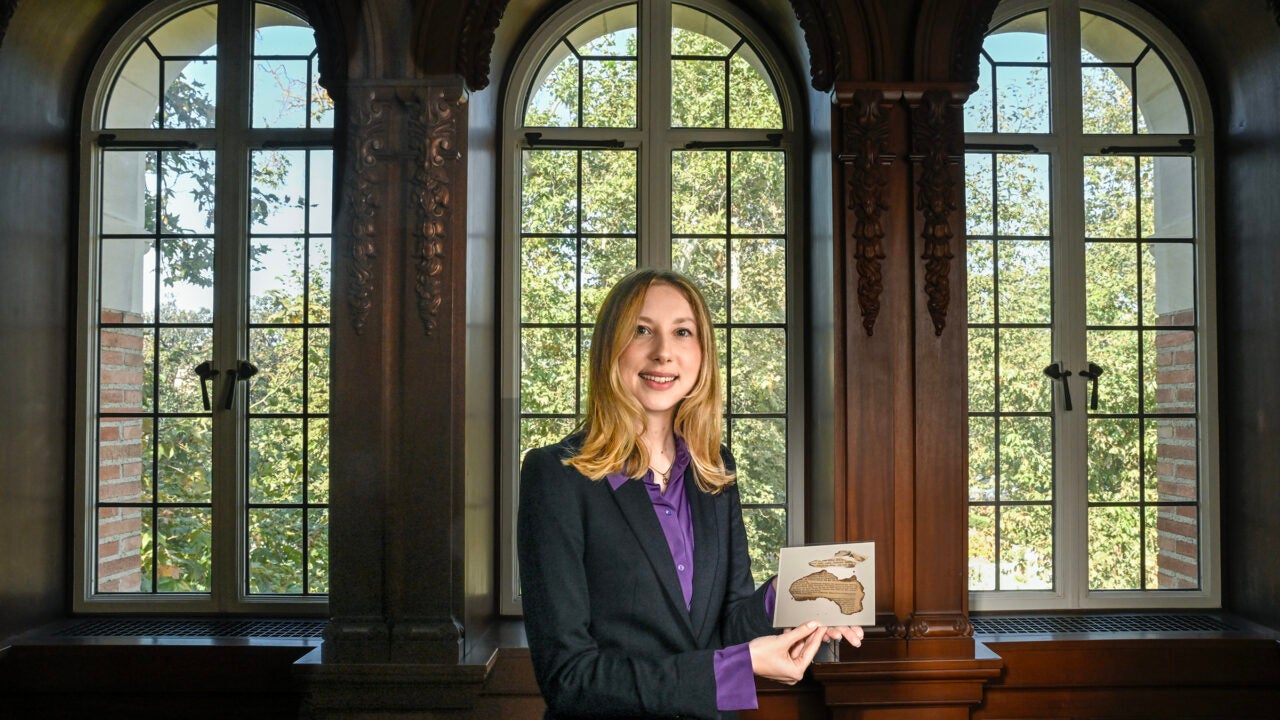
“As an author and Jew who specifically wrote about Jewish experiences and identity, Lion Feuchtwanger was attacked early on by the Nazi regime. His works, such as his internationally bestselling novel Jud Süß, were targeted on May 10, 1933, when ‘20,000 “Marxist,” pacifist, Jewish or other “un-German” books, “collected” by the Nazi-led students of Berlin University … were burnt tonight in the Opera Place in Berlin in the presence of Dr. Goebbels, the Minister of Propaganda’ (London Times, May 11, 1933).
“The remarkable artifact I am holding is a burned fragment of a page of Jud Süß pulled from the embers by a passerby in Berlin on May 10, 1933. It intrigues me that it was saved; I wonder by whom, and at what risk. To me this artifact symbolizes survival in the face of intentional destruction. The Feuchtwanger Memorial Library at USC Special Collections preserves the papers of Lion and Marta Feuchtwanger, as well as other archival collections documenting the experiences, influence and output of German-speaking refugees of the National Socialist period.”
Jessica Gambling, university archivist and records manager: Photo of Kappa Alpha Theta sorority members and/or pledges in front of Widney Hall (circa 1890)
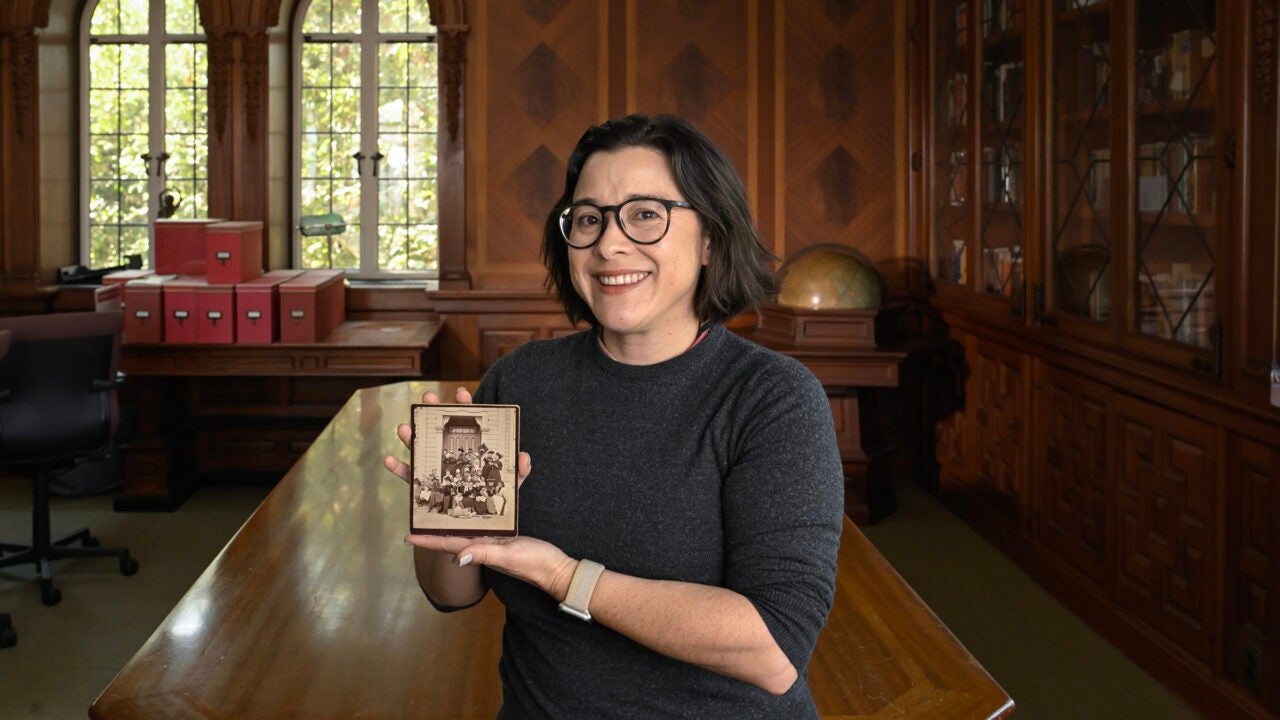
“I love this photo because it demonstrates that history is filled with human beings with human emotions, instincts and motivations. Do not be fooled: There was not a more dignified or noble human condition somehow destroyed by our modern culture that we should mourn and strive to resuscitate. All we’ve ever done is our best at being flawed humans, humans who would, from time to time, succumb to the urge to put on a bucket and blow off some steam.”
USC Digital Library
Deborah Holmes-Wong, director
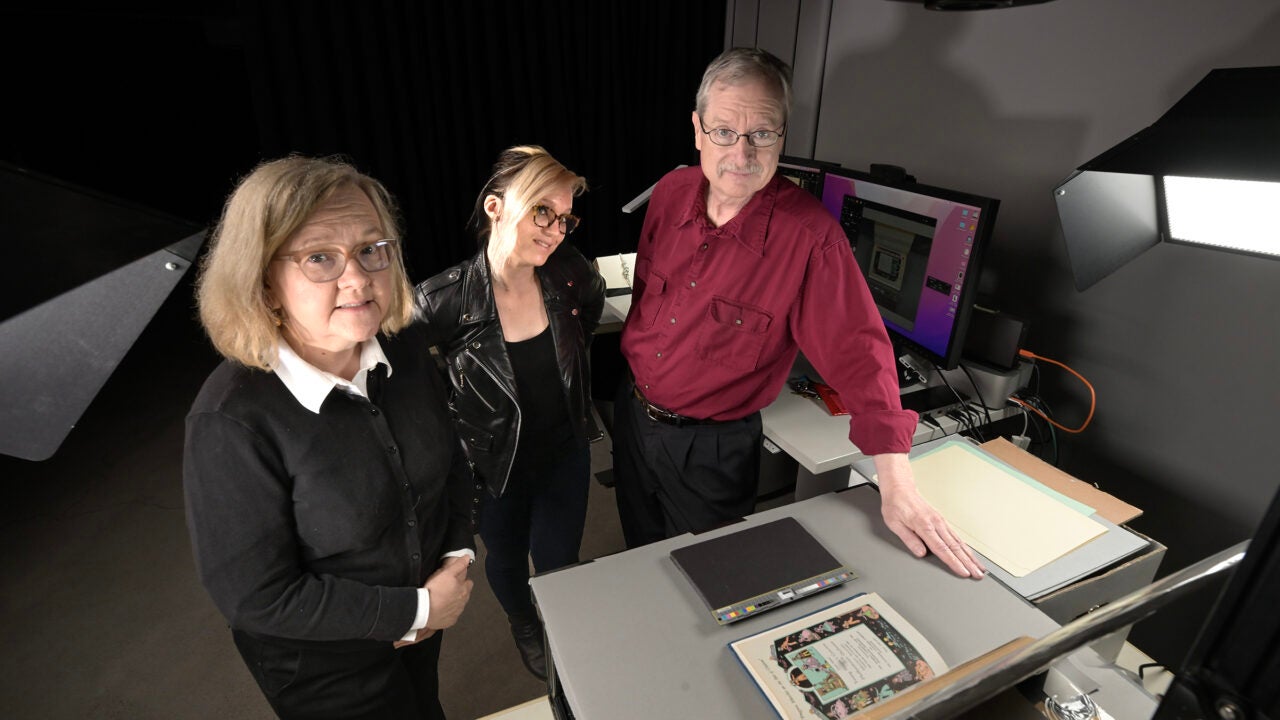
“Selecting a favorite item from the Digital Library is like picking a favorite child, and we have more than a million. Each one has its own unique characteristics. I chose to be photographed in front of one of our high-resolution cameras because the quality of the images it produces ensures that viewers get the best, most faithful reproduction of the original book or artifact, whether it’s a glass lantern slide from the Cassady Lewis Carroll Collection or an illuminated manuscript from Special Collections.”
Wilson Dental Library
Olivia Carreon, library supervisor: I Want to Die but I Want to Eat Tteokbokki: A Memoir by Baek Sehee
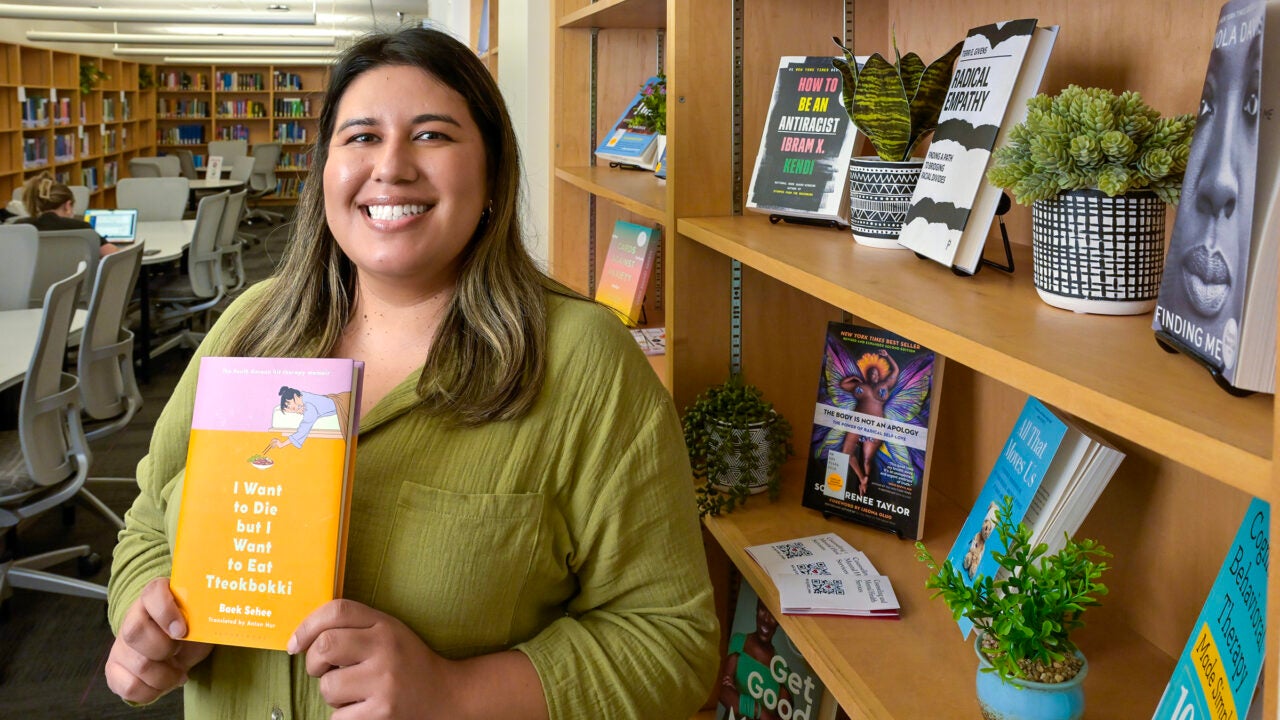
“This title, I Want to Die but I Want to Eat Tteokbokki, caught my eye when we first added it to the Wilson Dental Library’s Mental Health, Wellness, Self-Care, and Inspiration collection. I knew that beyond the intriguing title, this book had to be a good read since it was checked out by a USC undergrad as soon as we had finished processing it! This was one of the most interesting books I’ve read this year. It speaks honestly about mental health and depression. As the eldest daughter in a first-generation Mexican household, I really related to the author’s struggles with acceptance and learning to be kinder to yourself. This book is truly a gem in our popular reading collection. It’s also very inspiring to see so many new and different library patrons visit our library because of this new popular reading collection.”


